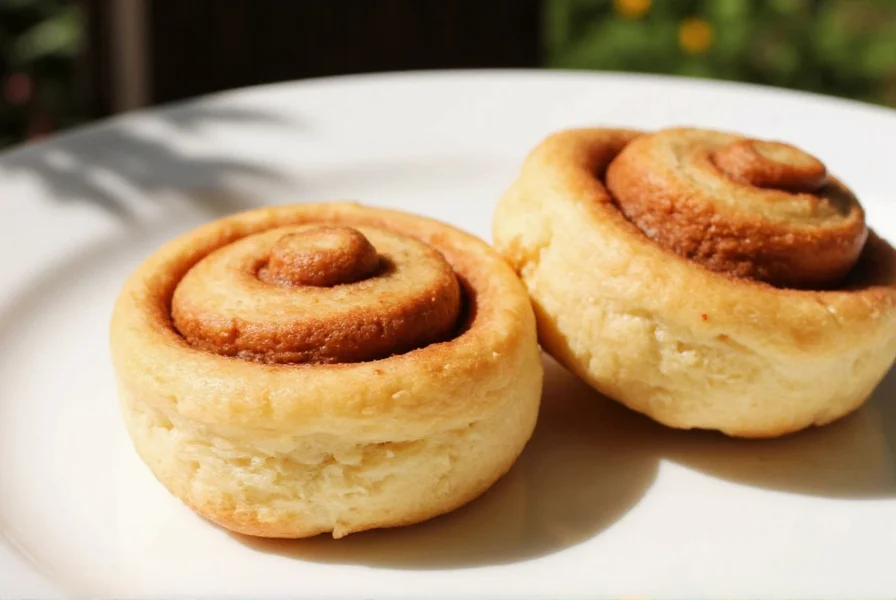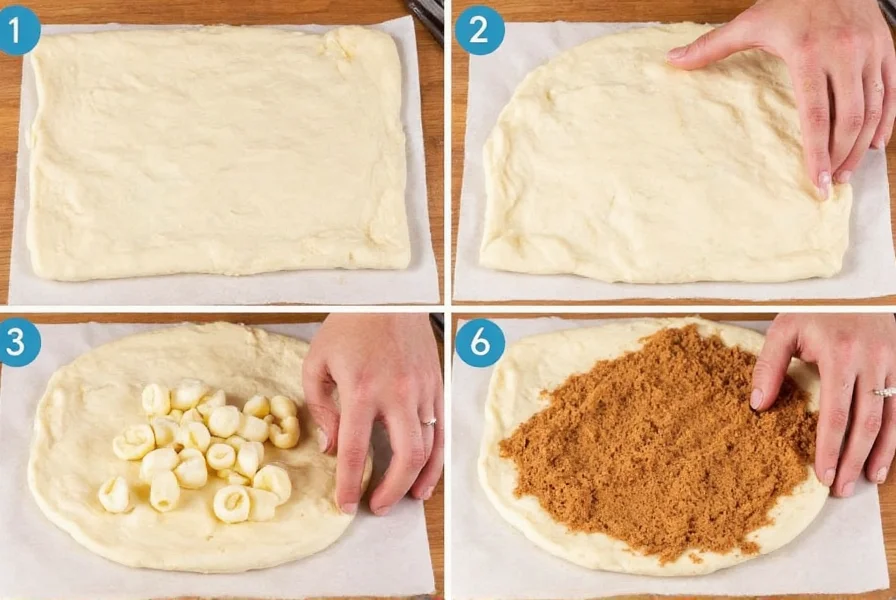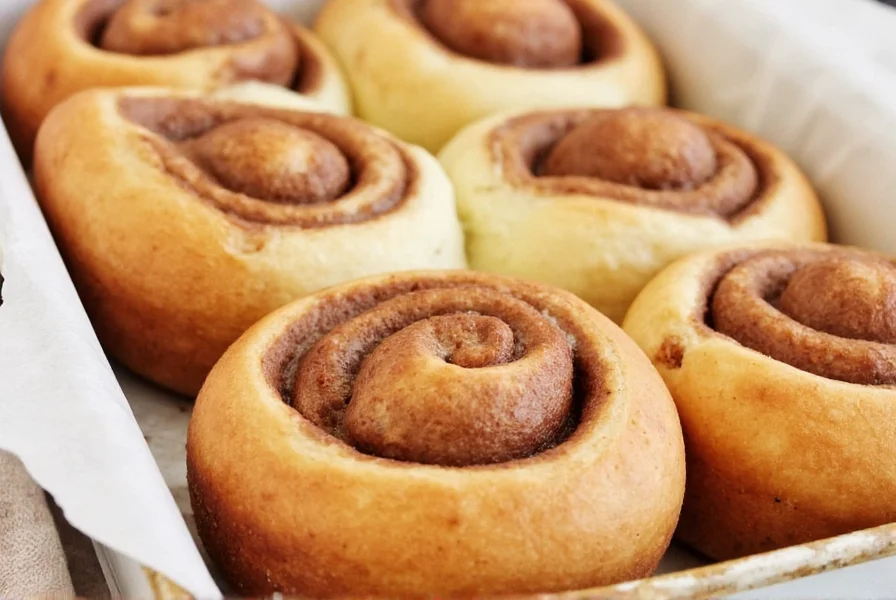Traditional cinnamon rolls delight with their rich, buttery sweetness but often come with a hefty calorie count. For those seeking a healthier alternative without compromising on that warm, comforting flavor, low calorie cinnamon rolls offer the perfect solution. Understanding how to modify classic recipes while preserving their essence is crucial for creating satisfying treats that align with dietary goals.
Why Traditional Cinnamon Rolls Are High in Calories
Standard cinnamon roll recipes rely heavily on calorie-dense ingredients. A single serving often contains:
| Ingredient | Calories per Serving | Primary Contributors |
|---|---|---|
| Butter | 100-150 | Fat content, richness |
| White sugar | 80-120 | Sweetness, texture |
| All-purpose flour | 70-100 | Carbohydrates, structure |
| Cream cheese frosting | 150-200 | Fat, sugar content |
These components combine to create the beloved texture and flavor but significantly increase the calorie count. The good news is that strategic substitutions can dramatically reduce calories while maintaining delicious results.
Smart Ingredient Substitutions for Lower Calories
Creating genuinely tasty low calorie cinnamon rolls requires thoughtful ingredient swaps that maintain texture and flavor. Consider these evidence-based substitutions:
Healthy Fat Alternatives
Replace half the butter with plain Greek yogurt. This swap cuts saturated fat while adding protein and maintaining moisture. For dairy-free options, unsweetened applesauce works well in the dough, though it shouldn't exceed one-third of the total fat content to preserve texture.

Sugar Reduction Strategies
Reduce sugar by 25% without noticeable flavor loss. For the filling, use a combination of cinnamon and a small amount of natural sweetener like monk fruit or stevia. These zero-calorie sweeteners provide sweetness without the blood sugar spike of traditional sugar. When making frosting, blend reduced-fat cream cheese with a touch of vanilla and powdered erythritol for a creamy finish.
Perfecting Your Low Calorie Cinnamon Roll Recipe
Follow this professional approach to create bakery-quality low calorie cinnamon rolls:
Dough Preparation Tips
Use a combination of all-purpose and whole wheat pastry flour (70% AP, 30% WW) for added fiber without compromising texture. When incorporating liquid ingredients, warm them to approximately 110°F (43°C)—too hot will kill the yeast, too cold won't activate it properly. Knead the dough just until smooth and elastic; overworking develops too much gluten, resulting in tough rolls.
Filling Technique Matters
The filling distribution significantly impacts flavor in low sugar versions. Mix 2 tablespoons of cinnamon with 1 tablespoon of your chosen sweetener and 1 teaspoon of cornstarch (to absorb excess moisture). Spread this mixture evenly but sparingly—thick layers can make rolls soggy during baking. For added flavor complexity without calories, incorporate a pinch of nutmeg or cardamom.
Nutritional Comparison: Traditional vs. Low Calorie
Understanding the nutritional differences helps justify the effort of making healthier versions:
| Nutrient | Traditional Roll | Low Calorie Version | Reduction |
|---|---|---|---|
| Calories | 380 | 175 | 54% |
| Total Fat | 16g | 6g | 63% |
| Saturated Fat | 8g | 2.5g | 69% |
| Sugar | 32g | 14g | 56% |
| Protein | 5g | 7g | +40% |
This comparison shows how strategic ingredient choices create substantial nutritional improvements while maintaining satisfaction. The low calorie version actually provides more protein thanks to Greek yogurt and careful ingredient selection.
Avoiding Common Low Calorie Baking Mistakes
Many home bakers encounter issues when first attempting healthier cinnamon rolls. Watch for these pitfalls:
- Overcompensating with sweeteners - Using too much alternative sweetener creates unpleasant aftertastes
- Incorrect yeast activation - Water temperature matters more in lower-fat doughs
- Overbaking - Low fat versions dry out faster; check 3-5 minutes earlier than recipe suggests
- Skipping the resting period - Proper rising time is crucial for texture in reduced-fat doughs

Storage and Reheating for Best Results
Proper storage maintains the quality of your low calorie cinnamon rolls. Keep them in an airtight container at room temperature for up to 2 days. For longer storage, freeze individual rolls on a baking sheet before transferring to freezer bags. When reheating, use a microwave for 15-20 seconds or warm in a 300°F oven for 5 minutes—this prevents the drier texture common in low fat baked goods.
Customizing for Dietary Needs
Adapt this basic low calorie framework for specific dietary requirements:
- Gluten-free option: Use a quality 1:1 gluten-free flour blend with xanthan gum
- Vegan version: Substitute Greek yogurt with coconut yogurt and use plant-based butter
- Keto-friendly: Replace flour with almond flour blend and use allulose sweetener
Each variation requires slight technique adjustments, but the core principles of balanced substitutions remain consistent across dietary needs.
How can I make cinnamon rolls without sugar that still taste sweet?
Use natural flavor enhancers like cinnamon, nutmeg, and vanilla extract which create perceived sweetness. Incorporate small amounts of zero-calorie sweeteners like monk fruit or stevia blended with cinnamon for the filling. The key is balancing these elements so no single substitute dominates the flavor profile.
Do low calorie cinnamon rolls freeze well?
Yes, low calorie cinnamon rolls freeze exceptionally well. Freeze them before adding frosting, then thaw at room temperature for 30 minutes before reheating. The reduced fat content actually helps them maintain texture better during freezing compared to traditional high-fat versions.
Can I use honey instead of sugar in low calorie cinnamon rolls?
Honey contains similar calories to sugar (about 64 calories per tablespoon) and has a higher glycemic index. For true low calorie results, better alternatives include monk fruit sweetener, erythritol, or a small amount of pure maple syrup used sparingly. If using honey, reduce other liquids by 25% to maintain proper dough consistency.
Why do my low calorie cinnamon rolls turn out dry?
Reduced fat content often causes dryness. Prevent this by incorporating moisture-rich ingredients like Greek yogurt, adding an extra egg white, or including a tablespoon of unsweetened applesauce. Also, avoid overbaking—check for doneness 3-5 minutes earlier than traditional recipes suggest, as low fat doughs cook faster.
What's the best low calorie frosting for cinnamon rolls?
Combine 4 ounces reduced-fat cream cheese with 1/4 cup powdered erythritol, 1 teaspoon vanilla extract, and 1-2 tablespoons unsweetened almond milk. This creates a creamy frosting with approximately 35 calories per serving compared to 150+ in traditional cream cheese frosting. For dairy-free, use coconut cream cheese alternative.
Creating satisfying low calorie cinnamon rolls requires understanding the science behind ingredient interactions. By implementing these evidence-based techniques, you can enjoy this beloved treat while supporting your health goals. The key is balancing substitutions to maintain the sensory experience that makes cinnamon rolls so special, proving that healthy baking doesn't mean sacrificing flavor or texture.











 浙公网安备
33010002000092号
浙公网安备
33010002000092号 浙B2-20120091-4
浙B2-20120091-4